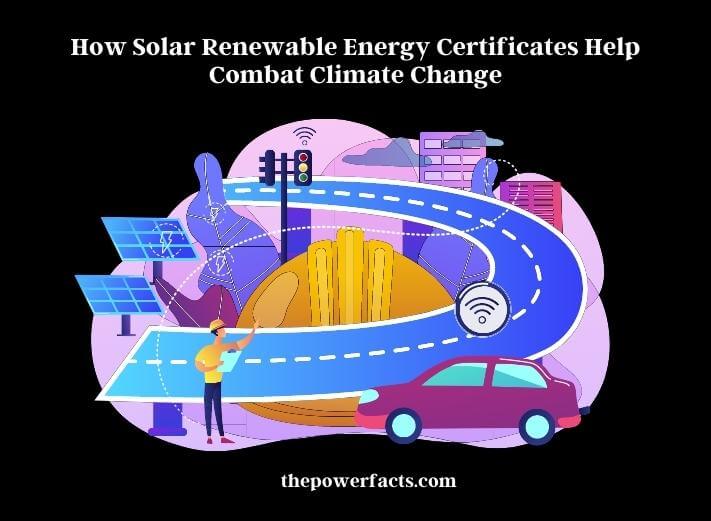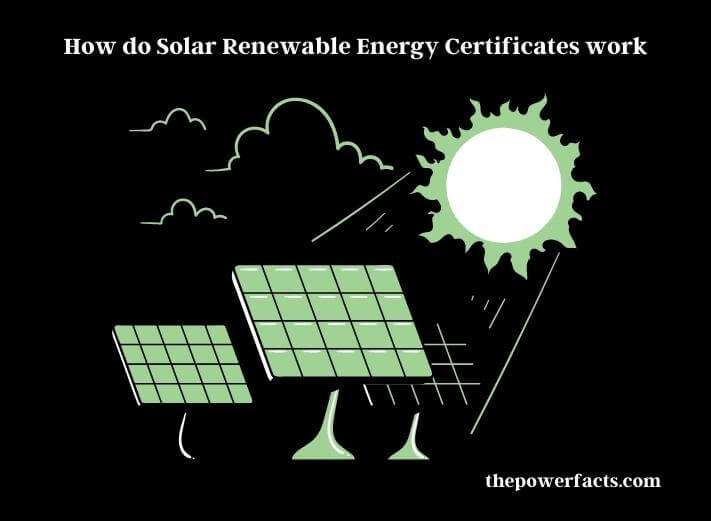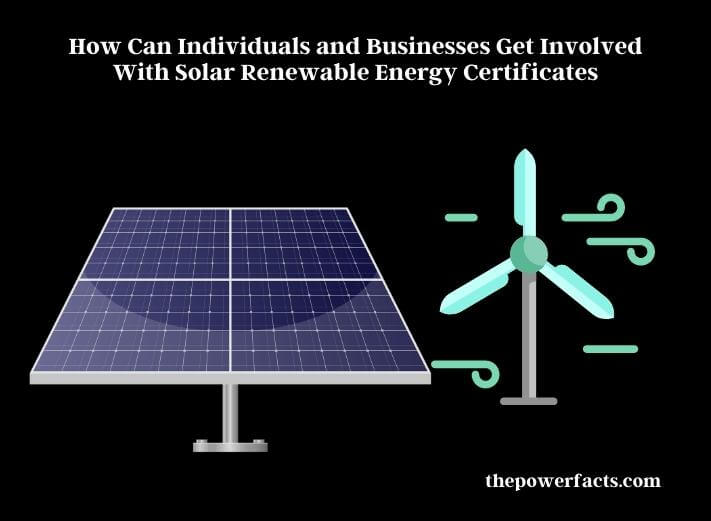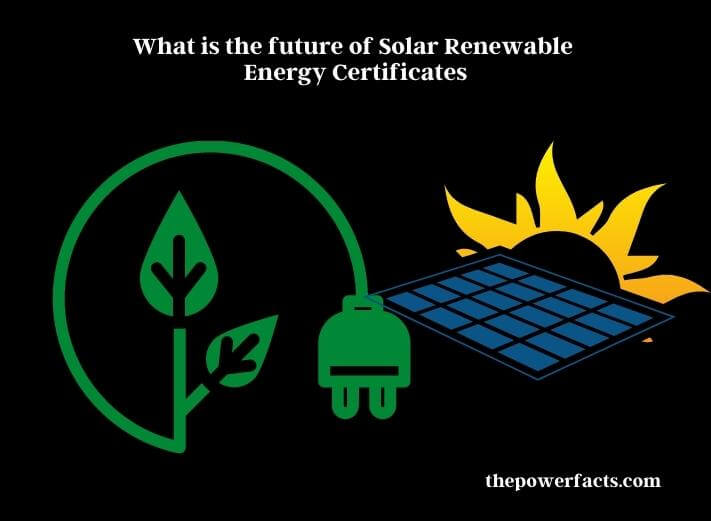Climate change is one of the most pressing challenges facing our planet today. As the world’s population continues to grow and industries continue to expand, the production of greenhouse gases and the resulting impact on the environment has become a major concern. In response to this challenge, governments, businesses, and individuals are increasingly turning to renewable energy sources like solar, wind, and hydropower to reduce their carbon footprint and combat climate change.

One initiative that has emerged as a promising tool for promoting the adoption of solar energy is the use of Solar Renewable Energy Certificates (SRECs). SRECs are a type of tradable certificate that represents the renewable energy attributes of electricity generated from solar energy.
What are Solar Renewable Energy Certificates (SRECs)?
Solar Renewable Energy Certificates, or SRECs, are a type of tradable certificate that represent the renewable energy attributes of one megawatt-hour (MWh) of electricity generated from solar energy. SRECs are created when a solar energy system generates electricity, and are sold to utilities or other entities that need to meet renewable energy requirements.
How do Solar Renewable Energy Certificates Work?
Solar Renewable Energy Certificates (SRECs) are a type of tradable certificate that represents the renewable energy attributes of electricity generated from solar energy. When a solar energy system generates electricity, it produces two things: the actual electricity that is fed into the power grid, and the renewable attributes associated with that electricity. These renewable attributes represent the environmental benefits of using renewable energy sources like solar power, including the reduction of greenhouse gas emissions.

SRECs allow solar energy system owners to sell the renewable attributes associated with their electricity separately from the actual electricity itself. This creates a market for renewable energy attributes, where buyers, typically utilities or energy suppliers, can purchase SRECs to meet their renewable energy requirements.
Each SREC represents one megawatt-hour (MWh) of electricity generated by a solar energy system. Solar energy system owners can sell their SRECs on an open market, where the price of SRECs is determined to supply and demand. The value of SRECs can vary widely depending on factors such as the state or country in which they are sold, the level of demand for renewable energy, and the overall market conditions.
Solar energy system owners may choose to hold onto their SRECs instead of selling them. This allows them to claim the renewable attributes associated with the electricity generated by their solar energy system, which can be used to meet renewable energy requirements in their state or country.
What are the Benefits of Solar Renewable Energy Certificates?
There are several benefits to the use of Solar Renewable Energy Certificates (SRECs) in promoting the adoption of solar energy:
Financial Incentives
By selling their SRECs on the open market, solar energy system owners can generate additional revenue from their solar energy systems. This can help offset the upfront costs of installing a solar energy system and make it more financially feasible for individuals and businesses to invest in solar energy.
Promote Renewable Energy Adoption
The existence of a market for SRECs creates a financial incentive for individuals and businesses to invest in solar energy. This can help drive the adoption of renewable energy sources, reducing the overall demand for fossil fuels and the associated greenhouse gas emissions.
Compliance With Renewable Energy Requirements
Many states and countries have renewable energy requirements that mandate a certain percentage of electricity must come from renewable sources like solar power. By purchasing SRECs, utilities, and energy suppliers can meet these requirements without necessarily having to invest in solar energy infrastructure themselves.
Transparency and Accountability
The use of SRECs creates a transparent and accountable market for renewable energy attributes. It ensures that the environmental benefits of renewable energy are accurately tracked and reported and that these benefits are not double-counted or misattributed.
The use of SRECs can help support the growth of solar energy adoption and promote the transition to a more sustainable energy future.
How do Solar Renewable Energy Certificates Help Combat Climate Change?
Solar Renewable Energy Certificates (SRECs) play a critical role in combatting climate change by promoting the adoption of solar energy and reducing greenhouse gas emissions.
If you create a market for renewable energy attributes, SRECs provide a financial incentive for individuals and businesses to invest in solar energy. This drives the adoption of renewable energy sources, which in turn reduces the overall demand for fossil fuels and the associated greenhouse gas emissions.
SRECs, help to ensure compliance with renewable energy requirements in many states and countries. These requirements mandate that a certain percentage of electricity must come from renewable sources like solar power. By purchasing SRECs, utilities, and energy suppliers can meet these requirements without necessarily having to invest in solar energy infrastructure themselves. This creates a demand for solar energy, which drives investment in the industry and reduces greenhouse gas emissions.
The use of SRECs promotes transparency and accountability in the renewable energy market. It ensures that the environmental benefits of renewable energy are accurately tracked and reported and that these benefits are not double-counted or misattributed. This creates a more accurate picture of the actual impact of renewable energy sources on greenhouse gas emissions and climate change.
How Can Individuals and Businesses Get Involved With Solar Renewable Energy Certificates?
Individuals and businesses can get involved with Solar Renewable Energy Certificates (SRECs) in several ways:

Install solar energy systems: The primary way for individuals and businesses to generate SRECs is by installing solar energy systems. By doing so, they can generate SRECs which can be sold on the open market.
Purchase SRECs: For those who are unable to install solar energy systems themselves, they can still support the adoption of renewable energy by purchasing SRECs. This creates a demand for SRECs, which drives investment in the solar industry and supports the transition to a more sustainable energy future.
Advocate for renewable energy policies: Individuals and businesses can also advocate for policies that support the adoption of renewable energy, such as renewable energy requirements and incentives for the installation of solar energy systems. This can help drive the adoption of renewable energy sources and increase demand for SRECs.
Partner with solar energy companies: Businesses can also partner with solar energy companies to support the adoption of renewable energy. This can involve investing in solar energy projects, purchasing SRECs, or entering into power purchase agreements (PPAs) which provide a reliable source of revenue for solar energy companies.
How do Solar Renewable Energy Certificates Compare to Other Renewable Energy Initiatives?
Solar Renewable Energy Certificates (SRECs) are just one of many renewable energy initiatives that are being used to combat climate change. Carbon offset credits are a mechanism for reducing greenhouse gas emissions by investing in projects that reduce emissions in other locations or industries. While SRECs are focused specifically on promoting the adoption of solar energy, carbon offset credits can support a broader range of renewable energy and emission reduction projects.
Feed-in tariffs are a policy mechanism that provides financial incentives for the installation of renewable energy systems. Unlike SRECs, which create a market for renewable energy attributes, feed-in tariffs provide direct payment for the electricity generated by the renewable energy system.
Net metering is a policy that allows individuals and businesses to receive credit for excess electricity generated by their solar energy systems. While net metering can provide a financial benefit for individuals and businesses, it does not create a market for renewable energy attributes like SRECs do.
Renewable energy requirements are policies that mandate a certain percentage of electricity must come from renewable sources. SRECs are often used to help meet these requirements, but they are not the only way to comply with them. Other methods include the installation of renewable energy systems or the purchase of renewable energy credits.
SRECs are just one tool in the fight against climate change, and they are not the only way to promote the adoption of renewable energy. Each initiative has its own strengths and weaknesses, and the best approach will depend on the specific circumstances and goals of a given project or policy.
What is the Future of Solar Renewable Energy Certificates?
The future of Solar Renewable Energy Certificates (SRECs) looks bright, as the adoption of solar energy continues to grow and demand for renewable energy attributes increases.

One major factor driving the future of SRECs is the decreasing cost of solar energy systems. As the cost of solar panels and installation continues to decrease, it becomes more accessible for individuals and businesses to install solar energy systems and generate SRECs. This increased adoption of solar energy is expected to drive demand for SRECs, creating a more robust market for these renewable energy attributes.
Many states and countries are implementing renewable energy requirements that mandate a certain percentage of electricity must come from renewable sources. This creates a strong incentive for utilities and other electricity providers to purchase SRECs to help meet these requirements. As more jurisdictions implement these policies, demand for SRECs is expected to increase.
Another trend that is expected to drive the future of SRECs is the growth of corporate renewable energy procurement. Many large corporations are setting ambitious renewable energy goals and are looking to purchase renewable energy attributes, such as SRECs, to help them meet these goals. This trend is expected to continue as more companies recognize the financial and environmental benefits of renewable energy procurement.
The future of SRECs looks bright as the adoption of solar energy continues to grow and demand for renewable energy attributes increases. As more individuals, businesses, and governments recognize the importance of transitioning to a more sustainable energy future, SRECs are expected to play an important role in driving this transition.
Do SRECs Only Apply to Solar Energy?
Yes, SRECs only apply to solar energy. Solar Renewable Energy Certificates (SRECs) are created as a result of the generation of solar power, which is produced by converting sunlight into electricity using solar panels. SRECs represent the environmental attributes of solar energy production, which include the reduction of greenhouse gas emissions, the promotion of energy independence, and the conservation of natural resources.
SRECs are specific to solar energy and are not interchangeable with Renewable Energy Certificates (RECs), which are created by other types of renewable energy sources such as wind, hydroelectric, or geothermal power. While both SRECs and RECs are similar in that they represent the environmental benefits of renewable energy, they are not interchangeable because they are tied to specific sources of renewable energy.
SRECs are typically bought and sold on a market where energy suppliers can purchase them in order to meet their renewable energy obligations, such as state-mandated renewable portfolio standards (RPS) or voluntary corporate sustainability goals. Because the price of SRECs is influenced by supply and demand, their value can fluctuate over time, with prices typically higher in states with more stringent RPS requirements.
How Do Tidal Power Initiatives Contribute to Combatting Climate Change, Similar to Solar Renewable Energy Certificates?
Global tidal power initiatives play a crucial role in combatting climate change, much like solar renewable energy certificates. By harnessing the power of ocean tides, these initiatives generate clean and renewable energy without producing greenhouse gas emissions. This helps reduce society’s reliance on fossil fuels and contributes to a more sustainable energy mix.
What is the Difference Between Solar Renewable Energy Certificates and Solar Panels?
| Solar Renewable Energy Certificates | Solar Panels |
| Solar Renewable Energy Certificates (SRECs) represent the environmental attributes of solar energy production. They are not physical equipment that generates energy. | Solar panels are physical equipment that generates solar energy. They convert sunlight into electricity. |
| SRECs can be bought and sold on the market. They are a type of financial incentive for investing in solar energy. | Solar panels are installed on rooftops or in open spaces. They generate electricity that can be used to power homes, businesses, or other facilities. |
| SRECs are specific to solar energy. They can be generated by solar energy systems. | Solar panels can generate renewable energy from various sources, such as solar, wind, or hydroelectric power. |
| The price of SRECs varies depending on market conditions and renewable energy requirements. | The cost of solar panels varies depending on the size of the system, the location, and other factors. |
Bottom Line
Solar Renewable Energy Certificates (SRECs) are an important tool in the fight against climate change. If you create a market for renewable energy attributes, SRECs help promote the adoption of solar energy and incentivize investment in renewable energy systems.
SRECs offer many benefits, including financial incentives for individuals and businesses, increased adoption of solar energy, and reduced greenhouse gas emissions. They are also flexible tools that can be used to help meet renewable energy requirements and support corporate renewable energy procurement.
Looking to the future, the demand for SRECs is expected to increase as the adoption of solar energy and demand for renewable energy attributes continues to grow. This makes SRECs a promising tool for promoting a more sustainable energy future.
It is important to remember that SRECs are just one tool in the fight against climate change. A comprehensive approach to reducing greenhouse gas emissions will require a combination of policy mechanisms, renewable energy technologies, and individual actions.
References: